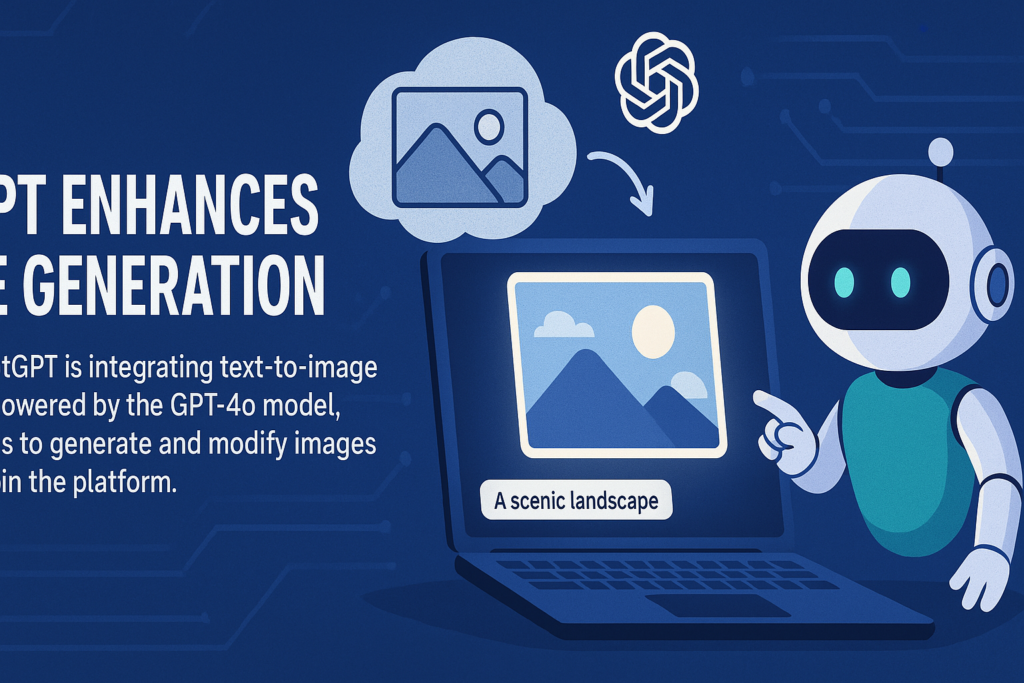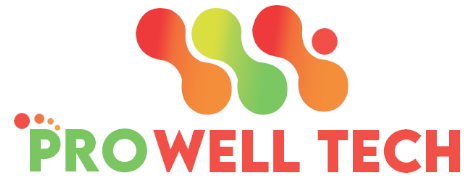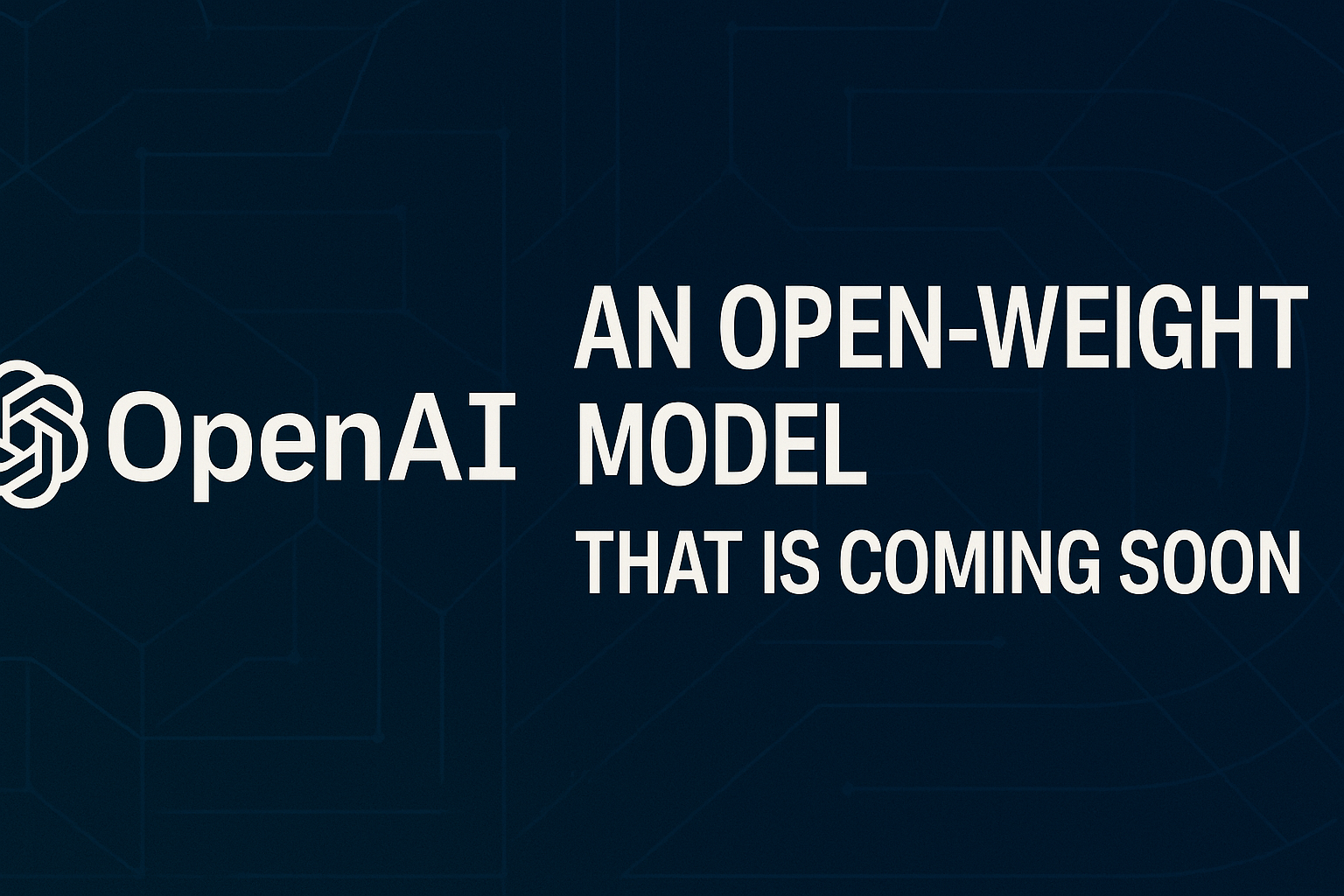OpenAI has introduced a groundbreaking enhancement to its flagship conversational AI, ChatGPT, by integrating text-to-image generation directly within the platform. This new capability, powered by the advanced GPT-4o model, allows users to create and modify images seamlessly through natural language prompts. This integration marks a significant leap forward in the evolution of AI-driven content creation, promising to streamline workflows and expand the possibilities for visual communication across many industries.
The ability to generate visuals directly within the familiar ChatGPT interface signals a new era of unified AI experiences, where text and image generation converge to empower users in unprecedented ways. Furthermore, utilising the GPT-4o model suggests a substantial upgrade in image generation prowess, likely surpassing the capabilities of previous iterations within ChatGPT, which relied on the DALL-E 3 model.
The official unveiling of this transformative feature came from OpenAI on March 25, 2025, with the core message centred around making AI-generated visuals a practical and powerful tool. In their announcement, OpenAI emphasised “useful” image generation, aiming beyond mere decorative outputs to provide visuals that serve real-world communication and information needs. This strategic direction indicates a move towards practical applications of AI image generation in professional and everyday contexts, potentially appealing to businesses, educators, and individuals requiring visuals for effective communication.
The repeated emphasis on “precision and power” in the official statements underscores a commitment to high-quality image outputs and the level of control users will have over the generation process, addressing potential scepticism about the reliability of AI-created visuals. OpenAI has long held the vision of image generation as a fundamental capability of their language models, and this integration within GPT-4o represents a significant step towards realising that vision.

The integration of GPT-4o into ChatGPT unlocks a range of sophisticated capabilities for image generation, moving far beyond basic image creation. The model’s ability to accurately render text within images is a key advancement, overcoming a common hurdle for previous AI image generators. This improvement opens up new avenues for creating practical visuals such as signs, menus, invitations, and infographics where legible text is essential.
Furthermore, GPT-4o demonstrates high prompt adherence, closely aligning generated images with user instructions, and can handle complex prompts containing up to 10-20 distinct objects. This capacity to understand and execute intricate instructions allows for the creation of more prosperous and more detailed visual outputs. The model also exhibits impressive character consistency across multiple image generations, ensuring that the visual representation remains coherent if a user is creating a series of images featuring the same character. This is particularly valuable for tasks like storyboarding, character design, or creating consistent branding visuals. The multi-turn generation capability allows for an iterative and conversational approach to image creation. Users can provide initial prompts and refine the generated images through natural language feedback, requesting changes and additions without starting from scratch.
Additionally, GPT-4o can utilise uploaded images as visual inspiration, seamlessly integrating their details and styles into newly generated content, showcasing its in-context learning abilities. Beyond artistic applications, the model shows improved capabilities in developing highly accurate diagrams and technical visuals, making it a valuable tool for fields like architecture and engineering. Users can also edit existing images by simply providing text prompts to the chatbot, further enhancing the versatility of this integrated feature. The aim for photorealistic outputs suggests a focus on creating highly realistic and visually appealing images.
Generating and modifying images within the ChatGPT interface using GPT-4o is designed to be an intuitive and conversational process. Users can use natural language prompts to describe the image they want to create, and ChatGPT will generate the visual. The real power lies in the ability to refine these images through follow-up prompts, then iteratively provide feedback and request modifications such as changes in colour, adding new elements, or alterations to the overall style. For example, a user might initially request an image of a cat and then ask ChatGPT to “add a detective hat and monocle” or “turn it into a pixel art version”. This conversational refinement process mirrors how humans often collaborate on creative projects, making the interaction with the AI feel more natural and accessible. The user-friendly interface ensures that even those without technical skills can easily navigate and utilise the image generation capabilities.
Furthermore, users can upload existing images and then use text prompts to modify them, such as changing the background, adding objects, or altering the artistic style. This capability streamlines content editing and repurposing workflows, allowing users to generate and modify images within a single platform. The fact that this image generation is now handled natively by GPT-4o within the existing ChatGPT interface provides a more consistent and seamless user experience compared to previous methods. This integration simplifies the creative process by eliminating the need to switch between different tools for text and visual tasks.
The integration of powerful image generation into ChatGPT has the potential to create a significant ripple effect across various industries, transforming content creation and visual communication. In marketing and advertising, the ability to rapidly generate unique and engaging visuals for campaigns, social media, and other promotional materials could significantly streamline workflows and reduce costs.
The speed and ease of creating visuals allow for more agile and responsive marketing strategies. For design professionals, this feature could be a powerful tool for quick prototyping and visualisation of ideas, allowing them to explore different concepts and present them rapidly. In education, the capacity to generate engaging visual aids and learning materials on demand could enhance the learning experience and make complex concepts more accessible.
Bloggers, journalists, and other content creators could leverage this technology to quickly produce compelling visuals to accompany their written content, enhancing reader engagement and the overall impact of their work. Moreover, the ability to generate personalised visuals could lead to more tailored and engaging user experiences on digital platforms, potentially changing how brands interact with their online audiences. The democratisation of visual content creation, making it accessible to individuals and businesses without specialised design skills, could also have profound implications for various sectors, underscoring the potential of this innovation to reshape industries.
When comparing ChatGPT’s new GPT-4o image generation capabilities with existing text-to-image tools, several distinctions and potential advantages emerge. OpenAI states that users can anticipate more “precise, accurate, [and] photorealistic” results, suggesting an improvement in the overall quality and realism of the generated images. A significant advantage of ChatGPT’s implementation is its seamless integration within a conversational AI platform. This offers a more intuitive and interactive image generation experience than standalone tools, which often require more technical prompting skills. The ability to refine images through natural language within the same interface used for text-based tasks creates a more streamlined and user-friendly workflow.
Furthermore, ChatGPT’s enhanced ability to accurately render text and generate diagrams is a key improvement, addressing a common limitation in many existing AI image generators. This makes ChatGPT a more versatile tool for creating practical visuals incorporating textual elements.
The improved consistency in character and scene generation across multiple images and enhanced editing capabilities within the conversational context also provide an edge over some other tools. However, it’s worth noting that the rendering process with GPT-4o currently takes longer than previous versions, typically requiring minutes rather than seconds. This slower generation speed could be a potential drawback for users who prioritise rapid iteration or need to quickly generate a large volume of images. While some tools might focus more on artistic and stylised outputs, ChatGPT’s emphasis on “usefulness” suggests a different strategic direction, aiming to be a more practical tool for a broader range of applications.
| Feature | ChatGPT (GPT-4o) | Midjourney | Stable Diffusion |
|---|---|---|---|
| Text Rendering | Significantly improved, accurate and detailed | Historically a weakness, improving but can still be inconsistent. | Can struggle with complex or lengthy text within images. |
| Prompt Adherence | High, handles complex prompts with 10-20 objects | Generally good, excels at artistic interpretations. | Highly dependent on prompting techniques, can be very flexible. |
| Editing | Enhanced, conversational refinement, specific part editing | Primarily focused on variations of initial generations. Limited direct editing. | Offers more granular control and editing options, often through community tools. |
| Speed | Slower rendering times (minutes) | Can vary depending on server load, generally relatively fast. | Can be fast depending on hardware and settings. |
| Integration | Seamlessly integrated within ChatGPT’s conversational interface | Accessed through Discord. | Typically used as a standalone application or integrated into other platforms. |
| Focus | Practical usefulness, accuracy, text integration | Artistic and imaginative image generation. | Highly versatile, used for both realistic and artistic image generation. |
Integrating advanced image generation capabilities into OpenAI’s GPT-4o model within ChatGPT signifies a transformative moment for the future of AI creative tools. This development points towards a future where the lines between text and visual content creation become increasingly blurred. The ability to seamlessly transform textual prompts into sophisticated visuals within a widely accessible platform like ChatGPT has the potential to democratise image generation technology, making it available to a broader audience than ever before. This increased accessibility could foster new forms of creative expression and digital storytelling, empowering individuals without specialised design skills to bring their visual ideas to life. However, this progress also brings forth essential ethical and societal considerations.
The ease with which AI can now generate high-quality images raises concerns about copyright infringement, mainly when mimicking the style of existing artists or studios. The potential for misuse in creating deepfakes or spreading misinformation through realistic AI-generated images is another significant challenge that needs to be addressed. The increasing sophistication of AI creative tools also prompts discussions about the evolving role of human artists and designers and the potential for AI to augment or even replace specific creative tasks.
While the provided research material does not contain direct expert quotes or extensive early user reviews, the described improvements in text rendering, prompt accuracy, and overall image quality suggest that initial reactions are likely to be positive. Users who have previously encountered limitations in these areas with other AI image-generation tools will likely appreciate the advancements offered by GPT-4o. The seamless integration within the familiar ChatGPT interface is expected to be well received, as it streamlines workflows and makes the technology more accessible.
However, the reported longer rendering times could be a concern for some users, particularly those who require quick turnaround times or need to generate many images. Brad Lightcap, OpenAI’s Chief Operating Officer, has commented on the copyright issues surrounding AI image generation, stating that the GPT-4o image generator will reject requests to mimic the work of any living artist. This indicates an awareness of the ethical considerations and an effort to mitigate potential copyright issues. The description of the technology as “genuinely jaw-dropping at times” hints at the impressive capabilities of the new image generation feature.
OpenAI has been transparent about the limitations and known issues associated with the GPT-4o image generation feature. These include potential cropping issues with tall images, the possibility of prompt hallucinations leading to inaccurate visuals, and blending errors when dealing with overly dense prompts. The model may also face challenges with rendering non-Latin scripts correctly. Users might encounter editing constraints where making isolated changes to specific parts of an image unintentionally alters other areas, and there could be issues with maintaining facial consistency in uploaded images across edits. Additionally, small visuals might lose essential details due to information density problems.
OpenAI has acknowledged these limitations and intends to address them through future model improvements. To promote transparency and combat the potential misuse of AI-generated content, OpenAI includes C2PA metadata in all generated images, making them identifiable as AI-created. The company also encourages best practices such as providing alt text for images and using them to support user intent while advising against generic, template-style designs. Furthermore, OpenAI has implemented safety measures to block requests for harmful content, such as child sexual abuse material and sexual deepfakes, and has restrictions on editing images of real people to prevent the creation of inappropriate imagery.
In conclusion, OpenAI’s integration of the powerful GPT-4o image generation capabilities directly into ChatGPT marks a significant milestone in the evolution of artificial intelligence. This advancement moves beyond primarily text-based applications towards truly multimodal tools that seamlessly understand and generate text and images. The potential impact on content creation, visual communication, and various industries is substantial, promising to democratise visual content creation and streamline workflows. While challenges and limitations remain, OpenAI’s commitment to transparency, continuous improvement and the implementation of safety measures indicates a responsible approach to this transformative technology. This development signifies a new era in the relationship between humans and AI in creative processes, with the potential to fundamentally reshape how individuals and organisations create and consume visual content.

